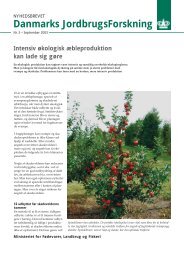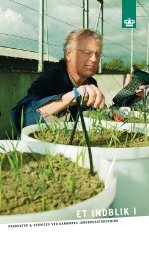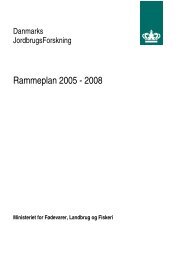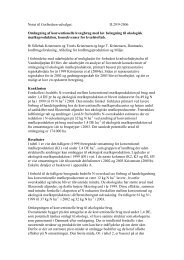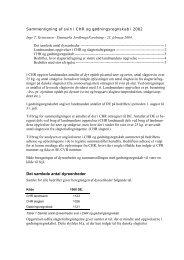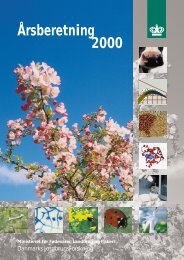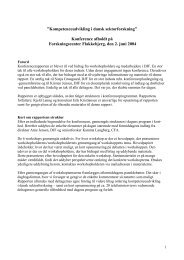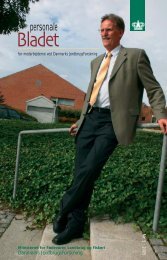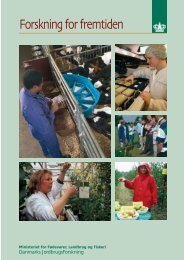Reproduction performances and conditions of group-housed non ...
Reproduction performances and conditions of group-housed non ...
Reproduction performances and conditions of group-housed non ...
Create successful ePaper yourself
Turn your PDF publications into a flip-book with our unique Google optimized e-Paper software.
- Appendix 1 -<br />
Figure 2. A pig embryo approximately 30 days old (Maddox-Hyttel, 2003)<br />
The major part <strong>of</strong> prenatal mortality occurs in the first 35 days <strong>of</strong> pregnancy <strong>and</strong> perhaps<br />
especially before day 18 <strong>of</strong> pregnancy (Pope & First, 1985; van der Lende et al., 1994). The<br />
average embryo mortality is in the range <strong>of</strong> 20-30 % but with large variation between <strong>and</strong><br />
within populations (van der Lende et al., 1994). The last mentioned is illustrated in a study<br />
by van der Lende (1989) where the embryo mortality varied from 0 to 67 % in 71 gilts.<br />
Hormonal control <strong>of</strong> reproduction<br />
The above-mentioned physiological events are under sharp endocrine control <strong>of</strong> the hypothalamo-piturity-ovarian<br />
axis (Turner et al., 2002). Gonadotrophin-releasing hormone<br />
(GnRH) is released from the hypothalamus <strong>and</strong> transported to the anterior pituitary gl<strong>and</strong><br />
where it stimulates the release <strong>of</strong> luteinizing hormone (LH) <strong>and</strong> follicle-stimulating hormone<br />
(FSH). Luteinizing hormone <strong>and</strong> FSH act on the ovaries to stimulate the development<br />
<strong>of</strong> the pre-ovulatory follicle (Foxcr<strong>of</strong>t & Hunter, 1985). FSH is necessary to support follicular<br />
growth up to 5-6mm whereas LH is necessary for the final stages <strong>of</strong> follicle maturation<br />
(Britt et al., 1985). These developing follicles produce oestrogen, which is the primary<br />
trigger <strong>of</strong> oestrus behaviour (Hughes et al., 1996). The increased level <strong>of</strong> oestrogen influences<br />
the hypothalamus to increase the secretion <strong>of</strong> LH. The LH peak introduces changes in<br />
the follicle wall eventually leading to ovulation (Hughes et al., 1996).<br />
The ratio <strong>of</strong> oestrogen <strong>and</strong> progesterone <strong>and</strong> the level <strong>of</strong> prostagl<strong>and</strong>in influence the transport<br />
<strong>of</strong> the released ova to the site <strong>of</strong> fertilisation by causing contractions <strong>of</strong> the oviduct<br />
(Fr<strong>and</strong>son & Spurgeon, 1992). Oestrogen <strong>and</strong> prostagl<strong>and</strong>in increase uterine activity <strong>and</strong><br />
progesterone decreases uterine activity (Langendijk, 2001). Prostagl<strong>and</strong>in is also involved<br />
in the transport <strong>of</strong> semen from the uterus to the site <strong>of</strong> fertilisation (Soede, 1993). This<br />
transport is furthermore depending on small amounts <strong>of</strong> oxytocin, released from the posterior<br />
gl<strong>and</strong> at the onset <strong>of</strong> oestrus, causing strong contractions <strong>of</strong> the uterus (Hughes & Varley,<br />
1980). The oxytocin release is augmented by both external (the presence <strong>of</strong> a boar) <strong>and</strong><br />
internal stimulation (from seminal oestrogens) (Soede, 1993).<br />
114




